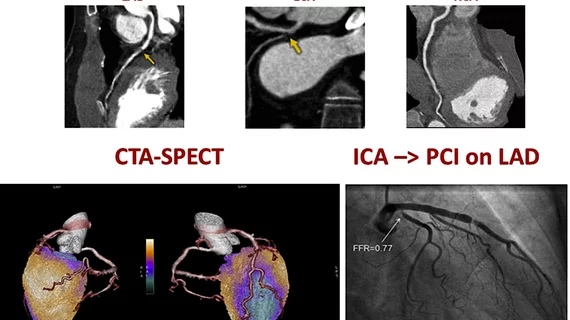New multi-society recommendations highlight role of non-invasive imaging in evaluating coronary artery disease
A new, multi-society document, "Non-Invasive Imaging in Coronary Syndromes", focuses on how multiple imaging techniques can evaluate different aspects of coronary artery disease (CAD), all without the need for invasive angiograms in the cath lab. The document also explains the importance of choosing the proper imaging test depending on the patient characteristics, clinical scenario and expertise at each imaging center.
CAD is one of the major causes of mortality and morbidity worldwide. Noninvasive imaging modalities play a fundamental role in the evaluation and management of patients with known or suspected CAD.
This document was developed by the European Association of Cardiovascular Imaging (EACVI) and the American Society of Echocardiography (ASE) in collaboration with the American Society of Nuclear Cardiology (ASNC), Society of Cardiovascular Computed Tomography (SCCT) and Society for Cardiovascular Magnetic Resonance (SCMR). It was published in the April 2022 issue of the Journal of the American Society of Echocardiography.[1]
"In all cases, a thorough understanding of the intersection between the mechanisms behind each imaging modality and the pathophysiology of the disease are critical for deciding on the proper test for a given patient at a given time," explained ASE’s lead author Federico Asch, MD, FASE, director of the echocardiography core lab at MedStar Health Research Institute and associate professor of medicine (cardiology) at Georgetown University, in a statement on the new recommendations.
Asch said this paper is an update to the original 2007 document because there have been so many major imaging technology advances since the last update.
"The field of cardiovascular imaging has evolved enormously over the last 15 years, with each imaging modality making great progress in its ability to detect and aid in the prognosis of patients with acute and chronic coronary syndromes," Asch said. "The new recommendations address the importance of growing evidence of the complexity of CAD and the multiple non-invasive imaging modalities and techniques that help in the evaluation of the different aspects of coronary disease and its effects on myocardial function and structure.”
This document and all ASE Guideline documents are also available online at ASEcho.org/Guidelines.
Find more cardiac imaging news

